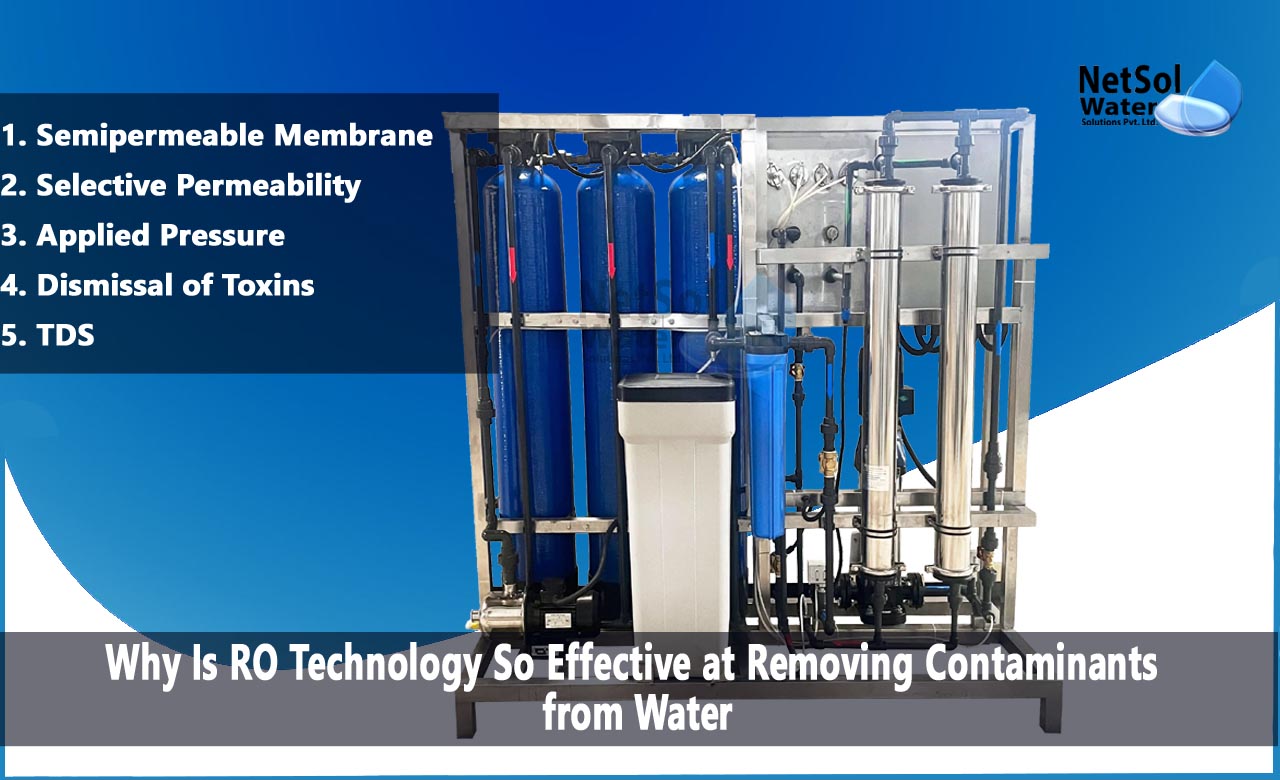Why Is RO Technology So Effective at Removing Contaminants from Water?
Admittance to perfect, safe, and unadulterated drinking water is basic for by and large wellbeing and prosperity. Sadly, water from different sources regularly contains a great many toxins like microscopic organisms, infections, broke down minerals, weighty metals, and synthetic mixtures. Reverse Osmosis (RO) innovation has developed as an exceptionally successful way for taking out a large number of contaminations from water to settle this issue. In this blog, we will look at why RO technology is so good at removing impurities and delivering safe and clear drinking water.
Understanding Reverse Osmosis (RO)
The method of isolating water particles from toxins and debasements utilizing a semipermeable film is known as converse assimilation. The name "Reverse" backward assimilation alludes to the reverse of the normal assimilation process, in which water particles move from a lower solute fixation region to a more noteworthy solute focus region, hence leveling focuses on the two sides of the film.
An outside force, as water powered pressure, is utilized backward assimilation to push water particles through the semipermeable layer the other way, abandoning contaminations and pollutions. This technique effectively separates unadulterated water from anything more, making it a magnificent strategy for water filtration.
The Mechanism Behind RO Technology
To understand why RO technology is so good in removing pollutants, one must first understand the basic mechanics at work:
· Semipermeable Membrane: The semipermeable membrane lies at the heart of RO technology. This membrane is made up of minute holes that are typically approximately 0.0001 microns in size. Only water molecules may flow through these holes, whereas bigger molecules and particles are blocked.
· Selective Permeability: The semipermeable membrane has selective permeability, which means it allows water molecules to flow while blocking most pollutants. The pore size is too tiny to allow bigger molecules, ions, and particles to pass through, resulting in this selectivity.
· Applied Pressure: The effectiveness of RO technology is dependent on applying external pressure to untreated water. The hydraulic pressure in the RO system is generated by a high-pressure pump. This pressure is required to resist natural osmotic pressure, which normally moves water from low-solute concentration places to high-solute concentration areas.
· Dismissal of Toxins: When compressed water comes into contact with the semipermeable film, the water atoms are constrained through the little pores. Different pollutants, for example, infections, microorganisms, particles, weighty metals and other natural contaminations can't go through simultaneously, thus, they are bound aside of the film.
Impurities like as microorganisms, infections, particles, disintegrated minerals, weighty metals, and natural particles are difficult to go through simultaneously. Accordingly, they end up on one side of the layer.
The Versatility of RO Technology
RO technology is well-known for its adaptability and ability to properly remove a wide range of contaminants:
· Dissolved Solids: RO systems excel in removing dissolved solids, which include minerals such as calcium, magnesium, and salt. This results in a large reduction in total dissolved solids (TDS) in the water and the eradication of scaling concerns.
· Heavy Metals: Because of their selective permeability and rejection of bigger ions, RO membranes efficiently remove contaminants such as lead, arsenic, and cadmium.
· Pathogens: RO membranes are extremely good in preventing the passage of bacteria, viruses, and other microbes, ensuring that the treated water is free of pathogens.
· Organic Compounds: RO technology can remove a variety of organic compounds, such as pesticides, herbicides, and industrial pollutants, therefore improving water safety and purity.
· Taste and Odor: RO systems successfully remove impurities that can alter the taste and odor of water, such as chlorine and sulfur compounds.
· Minerals: While RO technology removes minerals, which can affect the taste of water, mineral cartridges can be added to RO systems after purification to return beneficial minerals.
Conclusion
The amazing performance of reverse osmosis technology in eliminating impurities from water is based on the scientific concepts of selective permeability and applied pressure. These Ro systems help in removing an extensive range of pollutants, ensuring safe and clean drinking water. The RO technology has found a widespread use in different fields of industrial, residential, commercial areas and has become one of the most effective means of purifying water. It has become the name of trust for providing contaminant free water ensuring good health. Reverse osmosis technology, with its demonstrated capacity to improve water quality and safety, is an important instrument in assuring access to pure and healthy drinking water.
Netsol Water is Greater Noida-based leading water & wastewater treatment plant manufacturer. We are industry's most demanding company based on client review and work quality. We are known as best commercial RO plant manufacturers, industrial RO plant manufacturer, sewage treatment plant manufacturer, Water Softener Plant Manufacturers and effluent treatment plant manufacturers. Apart from this 24x7 customer support is our USP. Call on +91-9650608473, or write us at enquiry@netsolwater.com for any support, inquiry or product-purchase related query.



